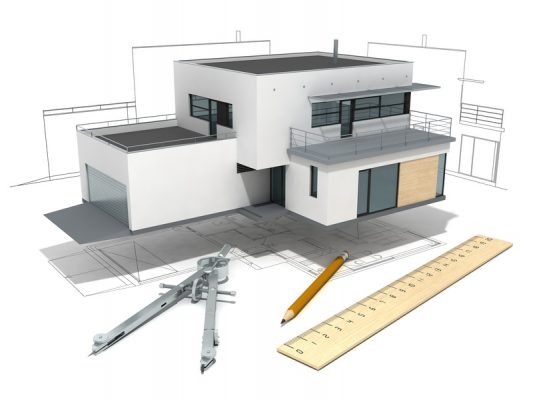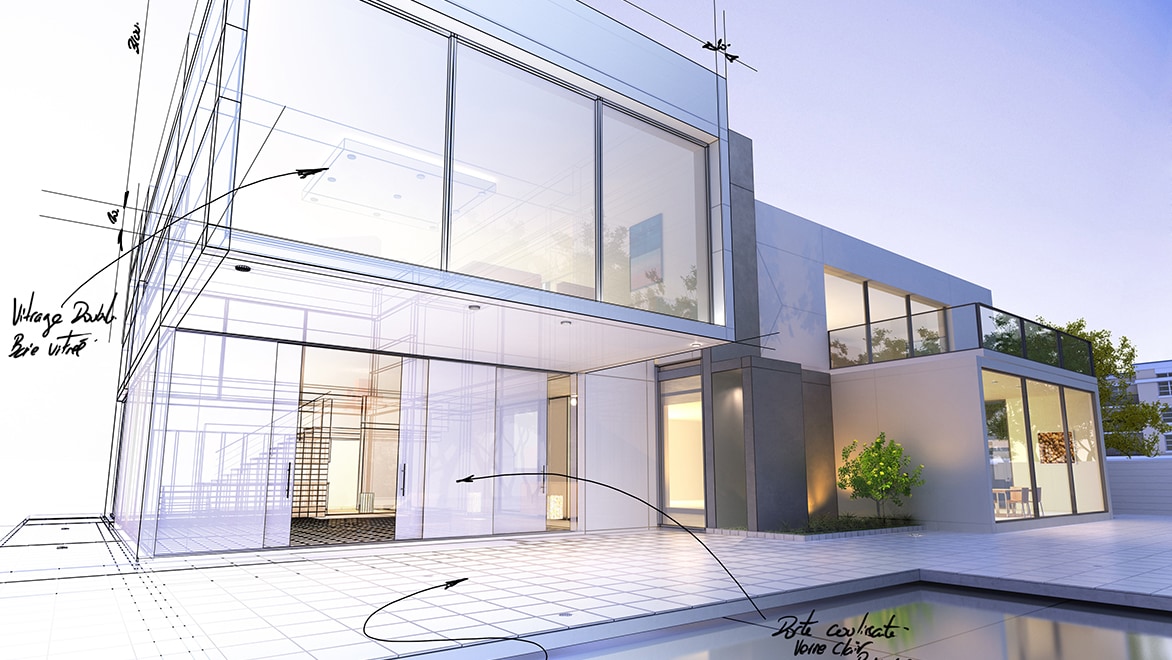Exactly How Residential Architects Create Personalized Residences for each Lifestyle
The process by which household architects design tailored homes is a nuanced interaction of understanding customer requirements and converting those insights right into practical space. Through detailed appointments and the use of layout devices, engineers capture the essence of their clients' way of lives, ensuring that each home mirrors individual values and desires. This collaborative technique prolongs past initial ideas, incorporating innovative innovations and sustainable practices to improve day-to-day living. As we discover the elaborate actions entailed in this transformative process, a much deeper recognition for the architect's function in forming special environments starts to emerge.
Comprehending Client Requirements

Efficient interaction is extremely important in this procedure. Designers must urge clients to express their way of lives, family members dynamics, and future desires, making certain that the layout reflects their one-of-a-kind identity. By utilizing devices such as surveys, interviews, and visual studies, architects can collect important understandings into the client's vision.
Moreover, understanding the context in which a home will certainly exist is crucial. Engineers have to consider elements such as the site qualities, neighborhood climate, and social impacts that can impact the style. This alternative method enables the production of spaces that are not only cosmetically pleasing yet lasting and additionally useful.
Eventually, a deep understanding of customer requires enables architects to produce personalized homes that boost the quality of life for their residents, promoting a feeling of belonging and convenience within their living environments.
Design Process and Cooperation
The layout process in household architecture is a dynamic interplay of imagination and partnership, where engineers, clients, and different stakeholders work carefully to bring a vision to life. This repetitive journey commonly starts with a collection of conferences to develop a thorough understanding of the client's goals, preferences, and way of living requirements. Throughout these conversations, engineers collect vital info, enabling them to conceptualize styles that line up with the client's vision.
Adhering to the preliminary examinations, the style phase evolves via illustrations, 3D models, and building makings. This visual interaction acts as a tool for architects to present ideas, while additionally inviting client feedback, ensuring that the final style resonates with their assumptions. Reliable partnership with engineers, contractors, and interior designers is crucial throughout this phase, as it makes sure that all practical facets of the job are perfectly incorporated.

Incorporating Way Of Life Aspects
Including lifestyle elements right into residential design is important for producing rooms that truly reverberate with the residents. residential architecture homes. This procedure starts with comprehending the see post unique requirements, preferences, and daily routines of the home owners. Designers participate in comprehensive discussions to reveal exactly how the private or family uses their area, whether for amusing guests, seeking hobbies, or looking for silent hideaway
Once these understandings are gathered, architects can tailor style functions that enhance day-to-day experiences. Open floor plans might be developed for families that focus on togetherness, while dedicated offices can be integrated for those who work from home. Exterior areas, such as gardens or outdoor patios, can be emphasized for family members that take pleasure in outdoor activities or amusing.
Moreover, adaptability is an essential factor to consider; multi-functional spaces enable adaptability as way of lives develop over time. Custom-made storage space services can likewise be included to meet details company needs, making certain that the home remains clutter-free and practical. Inevitably, by attentively weaving way of living elements into the building fabric, residential designers produce tailored homes that not only fulfill aesthetic wishes yet likewise significantly improve the quality of life for their clients.
Sustainable and Smart Style
Smart and sustainable style significantly plays a crucial duty in domestic design, as property owners look for to minimize their environmental impact while improving their living experiences. Engineers are currently incorporating green materials, energy-efficient systems, and ingenious innovations to develop homes that not only meet aesthetic desires yet likewise serve the world.
Integrating renewable resource sources, such as solar panels and wind turbines, permits homeowners to harness natural deposits, substantially reducing reliance on typical power grids. Smart home technologies additionally improve sustainability by enhancing energy usage through automated systems that regulate cooling, home heating, and illumination based on occupancy and choices.
Additionally, the use of sustainable building materials-- like redeemed timber, bamboo, and recycled steel-- advertises a circular economy, reducing waste and source intake. Designers also highlight easy design concepts, making certain homes are oriented for maximum natural light and air flow, consequently reducing the need for fabricated heating and air conditioning.
Along with eco-friendly benefits, smart and lasting design adds to the total comfort and wellness of locals. By focusing on indoor air top quality and natural environments, architects create spaces that cultivate well-being, permitting property owners to flourish attuned to their important source atmosphere.
Settling and Carrying Out Strategies
Completing and carrying out strategies is a crucial stage in the residential design procedure, where the vision of a tailored home starts to materialize. This phase entails meticulous interest to information, ensuring that every facet of the design is exactly verbalized and prepared for building. residential architecture homes. Engineers collaborate very closely with customers to assess last plans, addressing any last-minute changes or worries, while making certain that all elements align with the home owner's lifestyle needs
When strategies are completed, designers prepare detailed building papers, consisting of thorough illustrations and requirements that function as a blueprint for home builders. These papers outline products, surfaces, and setup techniques, providing clarity for contractors and subcontractors. In addition, safeguarding essential authorizations and sticking to regional building codes is important, as it ensures conformity and smooth job execution.
Effective interaction is essential throughout this stage. Routine updates and conversations with building contractors help to mitigate possible concerns before they occur. By fostering a collaborative setting, architects can assure that the application straightens with the original vision. Inevitably, this vital stage changes principles into reality, laying the foundation for a home that mirrors the distinct lifestyle and choices of its residents.
Verdict
Finally, property designers play a pivotal function in crafting customized homes that accommodate diverse way of livings. With careful understanding of client needs, collaborative style procedures, and the combination of way of life components, designers guarantee that each home shows visit this page specific preferences. The incorporation of smart modern technologies and sustainable methods better enhances functionality and environmental obligation. Inevitably, the efforts of residential designers culminate in the understanding of customized home that promote convenience and health for their citizens.
The procedure by which household engineers layout customized homes is a nuanced interplay of comprehending client requirements and converting those insights into functional living spaces. Through detailed consultations and the usage of layout devices, architects record the significance of their customers' way of livings, ensuring that each home reflects individual worths and goals. Engineers must motivate clients to verbalize their way of livings, family members dynamics, and future goals, guaranteeing that the style reflects their unique identification.The style procedure in property architecture is a vibrant interplay of imagination and collaboration, where engineers, clients, and numerous stakeholders function closely to bring a vision to life - residential architecture homes. Via careful understanding of client needs, joint style procedures, and the integration of way of living aspects, engineers ensure that each home reflects specific preferences